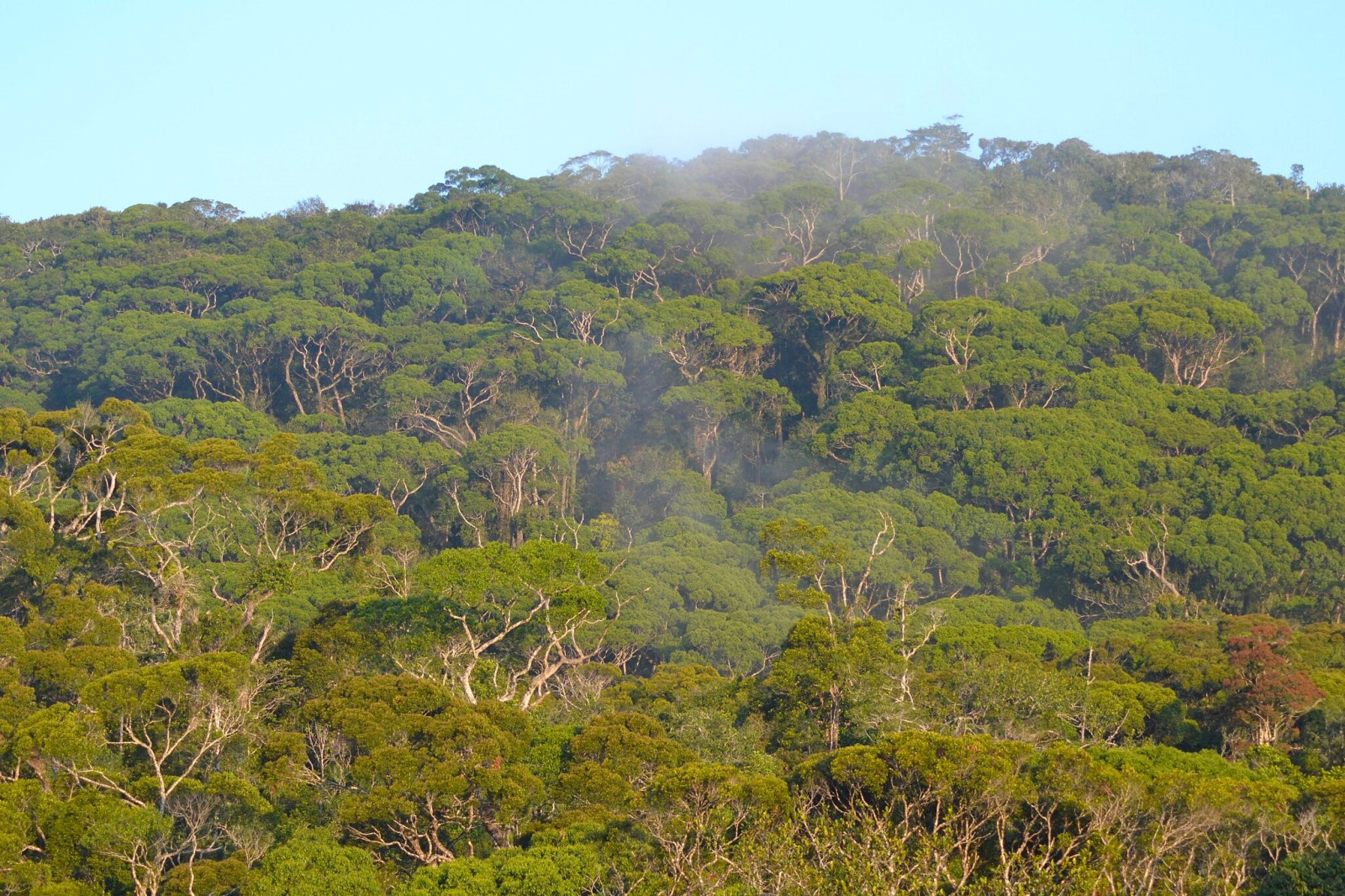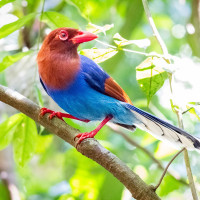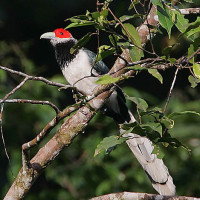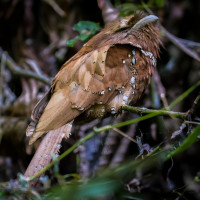Beskrivning
Sinharaja Forest Reserve is a birding hotspot in Sri Lanka and the country's last viable area of primary tropical rainforest. The hilly virgin rainforest is part of the Sri Lanka lowland rain forests ecoregion. Over 60% of the trees in this forest are endemic, many of them considered rare. There are two rivers marking the borders of the park, the Koskulana Ganga in the north and the Gin Ganga in the south. Because of the dense vegetation, difficult lighting conditions, and birds that are often high in the forest canopy you have to work hard to see the birds well, and the often cloudy and rainy weather also doesn't help to make it easy. But the birding is exciting and rewarding.
The birds in Sinharaja Forest Reserve tend to move in mixed feeding flocks, invariably led by the Sri Lanka Drongo and the noisy Orange-billed Babbler. Of Sri Lanka's 26 endemic birds, the 20 rainforest species all occur here, including the elusive Red-faced Malkoha, Green-billed Coucal and the stunning Sri Lanka Blue-Magpie. Other commonly sighted endemics are Sri Lanka Grey Hornbill, Black-capped Bulbul, Sri Lanka Frogmouth, Spot-winged Thrush and Ashy-headed Laughingthrush.
Detaljer
Tillgänglighet
The southern entrance of Sinharaja Forest Reserve is situated about 160 km southeast of Colombo. The only way to enter Sinharaja Forest Reserve is on foot, accompanied by a national guide. The entry fee is 2700 LKR (15 USD, price of 2024). The entrance price includes a local guide, as a guide is mandatory. Do ask for a guide who specializes in bird watching, this gives you much more focus on birds. A hike through the forest will generally take about 2,5 hours, but you can choose to walk up to 4 or 5 hours without extra cost. As the forest has plenty of leeches you can buy special anti-leech socks when you buy your ticket (about $ 3 for a pair of socks). If you wear these socks together with long trousers and closed shoes, then you will have little trouble with the leeches.
You can get your ticket at the two Sinharaja gates, which are open 6:30-18:00 (last tickets sold at 16.30). This side of the reserve can be entered via Deniyaya, a small and dusty town on the edge of the rainforest. The Pitadeniya Entrance and the Kurulugala Entrance are good starting points for exploring the rainforest and its diverse flora and fauna.
If you are traveling by public transport: From the main bus station in the town of Matara a direct bus goes to Deniyaya six times a day. Make sure you bring enough water and snacks as there are no restaurants of any kind in the park.
You can also enter the National Park on the northwestern side (see separate entry on Birdingplaces).
Terräng och habitat
SkogFörhållanden
Kulligt , SumpigtRundtur
JaTubkikare behövs?
NejBästa säsong för skådning
Året runtBästa tid för ett besök
Vår , VinterRutt
Smal stig , Bred stig , GrusvägHur ansträngande vandring
Genomsnittlig vandringNås
Till fotsFågeltorn / plattform
NejExtra information
January until March is the best time to visit, as you will avoid the rainy season. April and August to October are still good months to visit, but there might be a bit more rain. But always be prepared for rain!



